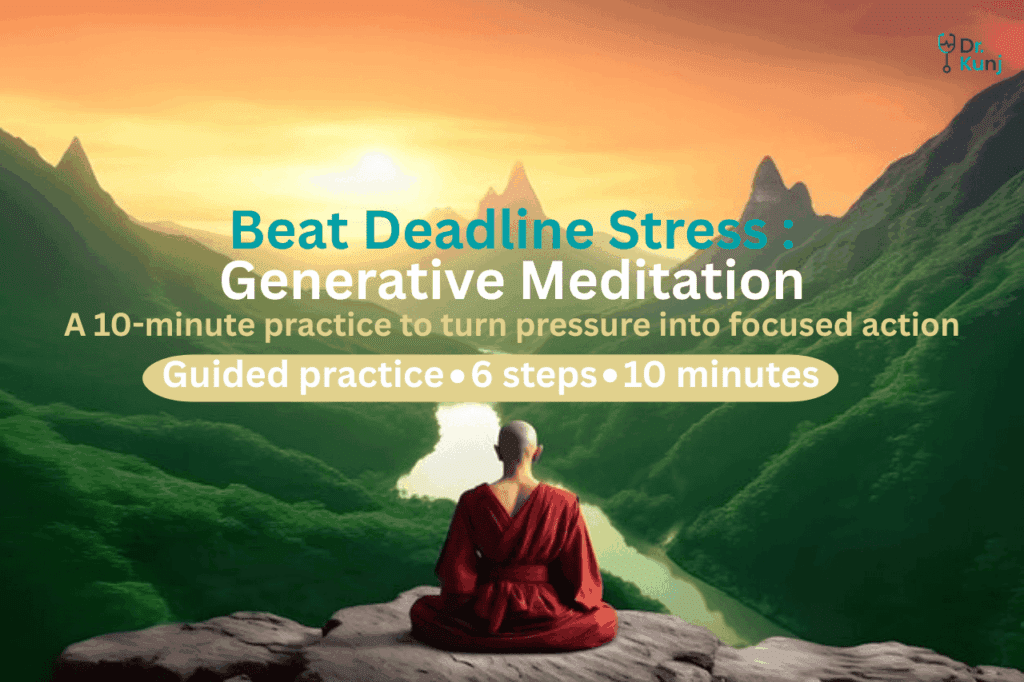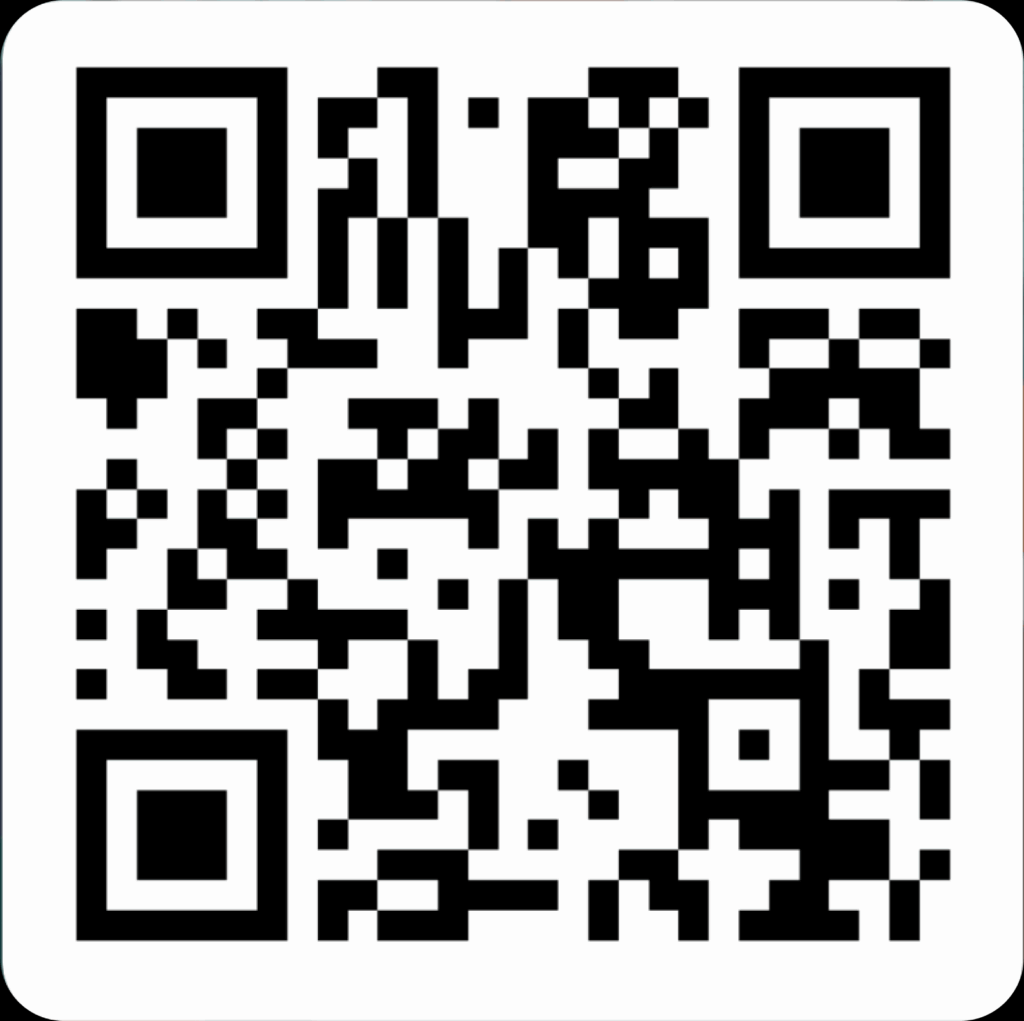When deadlines pile up and the clock races, stress narrows our attention and drains our energy. Generative meditation offers a simple, science-aligned way to flip that script—by drawing on your own lived successes to create calm, clarity, and momentum. Below is a guided, 10-minute practice based on a short teaching session that helps you remember what already works for you, apply it today, and share it with others.


What Is Generative Meditation?
Generative meditation is a reflective practice that “generates” useful mindsets and actions from your personal experience. Instead of clearing the mind entirely, you intentionally recall specific times you performed well under pressure, identify the conditions and behaviors that made that possible, and then apply those insights to the present moment. It’s practical, empowering, and tailor-made to your real life.Beyond Deadlines: Use Generative Meditation for Any Life Problem (Patience, Organization, Happiness & More)
Generative meditation isn’t just for crunch time—it’s a way to design your next move in any area of life. Instead of reaching for one-size-fits-all tips, you pose a precise question to yourself and mine your own history for answers that already work for you. Try prompts like:- “What was true during the most organized/happiest season of my life?”
- “When did I feel most in control, and what conditions were present?”
Why Deadline Stress Hurts (and How This Helps)
Time pressure can trigger a threat response: shallow breathing, tunnel vision, and reactive decision-making. Generative meditation counters that by widening your perspective and reconnecting you with evidence that you can handle tough timelines. You’re not importing someone else’s tips—you’re rediscovering your own best methods and rehearsing them for today.A 10-Minute Generative Meditation for Deadline Pressure
Find a quiet spot. Sit comfortably, shoulders relaxed, feet grounded. Silence notifications if you can.Step 1: Remember a time you were especially effective (1–2 minutes)
Close your eyes and bring to mind a concrete moment when you navigated multiple deadlines well. See where you were, what the tasks were, who was involved, and how you felt as you moved through it. Don’t worry if it wasn’t perfect—focus on the effectiveness you did have. Prompt: “What was true about that time in my life when I handled time pressure well?”Step 2: Name the conditions that helped (1–2 minutes)
Gently list the conditions that were present. Examples might include: a clear plan, a prioritization matrix, an early start, focused work blocks, helpful collaborators, a supportive supervisor, protected sleep, or even a motivating deadline. Prompt: “What were the circumstances—environmental or structural—that enabled me to succeed?”Step 3: Extract the behaviors you controlled (1–2 minutes)
Zoom in on what you made happen. Maybe you shut down distractions, asked for clarifications, set mini-milestones, or used a quick recovery ritual after interruptions. Note 3–5 behaviors you owned. Prompt: “How did I behave that enabled success under time pressure?”Step 4: Take the 80-year-old vantage point (1 minute)
Imagine yourself at age 80, looking back on today. From that wiser vantage point, what will you be proud you did? What would you regret not doing? Let future-you nudge present-you toward clarity and courage. Prompt: “From that future perspective, what actually matters right now?”Step 5: Apply your conditions and behaviors to today (2 minutes)
Open your eyes if you’d like and translate your list into immediate moves. Map conditions → actions:- Condition: clear plan → Action: outline the deliverables and due dates in one page.
- Condition: focus blocks → Action: book two 50-minute deep-work sessions this afternoon.
- Condition: fast feedback → Action: send a draft to your stakeholder by 3 p.m. for early input.
- Condition: energy management → Action: schedule a 10-minute break after each block.
Step 6: Decide what changes you’ll make today or tomorrow (1 minute)
Commit to 1–3 concrete adjustments that fit your current workload.- Reorder tasks by impact and urgency.
- Say “not now” to one nonessential request.
- Clarify one ambiguous requirement before starting work.
Step 7: Pay it forward (30–60 seconds)
Identify one colleague or friend who could benefit from the same conditions. Share one tip or invite them to join a focus block. Teaching consolidates your learning and improves team performance. Prompt: “How can the conditions that helped me also help someone else today?”Your Personal “Deadline Rules”
From your notes, craft 3–7 concise rules. Post them near your workspace or as a pinned note. Examples:- Plan before I start. Outline deliverables and define “done.”
- Chunk the work. 50 minutes on, 10 minutes off, twice before lunch.
- Surface uncertainty early. Ask clarifying questions within the first hour.
- Protect energy. Hydrate, breathe, and move for two minutes each break.
- Ship small. Share a draft at 30% for feedback rather than waiting for 100%.
- One screen, one task. Everything else gets parked on a capture list.
- End with intention. Write tomorrow’s first three moves before closing.
Quick Tips to Make It Stick
- Schedule it. Put a 10-minute generative meditation at the start of heavy sprint days.
- Keep a wins log. Capture moments you handled pressure well; they become raw material for future sessions.
- Pair with a breath reset. Three slow inhales through the nose, extended exhales, then begin Step 1.
- Use a cue. Start the practice whenever you feel time pressure rising—tight shoulders, scattered tabs, or racing thoughts.
A Short Script You Can Read to Yourself
“I’m recalling a time I handled multiple deadlines well. I’m noticing what was true about those conditions and what I made happen. I’m listing the behaviors that worked. From the perspective of my 80-year-old self, I see what matters most today. I’m choosing three actions I’ll take in the next few hours. I will share one helpful condition with someone else. I carry these rules forward now.”Why This Works
- It leverages memory reconsolidation. Revisiting effective episodes strengthens the neural pathways tied to competence and calm.
- It reduces decision fatigue. By extracting rules, you shift from ad-hoc choices to pre-committed moves.
- It builds agency. Stress often feels like the environment acting on you; this practice highlights what you can act on in return.
Tools That Support the Practice (HRV Tracking)
A simple feedback loop can help you see progress in focus and recovery. If you’d like to track heart-rate variability (HRV) as a proxy for recovery and stress adaptation, consider:- Track HRV 👉 Samsung Galaxy Ring
- Track HRV 👉 Oura Ring 4 – Size 8 and Size 10
Final Words
Deadlines will always be part of modern life, but the way you meet them is yours to design. Generative meditation gives you a repeatable framework to turn pressure into purposeful action—by mining your own successes, naming the conditions that helped, and installing them in your day. Start small: one recalled win, one enabling condition, one decisive move. Write your “deadline rules,” revisit them before big pushes, and share at least one with a colleague. Over weeks, you’ll notice less reactivity, more clarity, and results that arrive with steadier effort. You’re not trying to be superhuman—you’re learning to be consistently effective. That’s a practice worth keeping.FAQs
What’s the difference between generative meditation and mindfulness?
Mindfulness emphasizes present-moment awareness without judgment. Generative meditation includes that awareness and adds a structured reflection to generate useful strategies from your lived experience. Think of it as mindfulness plus action design.
How long should this take?
About 8–10 minutes. In crunch times, you can run a “micro-cycle” in 3 minutes: recall one success, name one condition, choose one action.
What if I can’t think of a past success?
Broaden the frame. Look for any moment of partial progress—finishing a section early, asking for help at the right time, or rescuing a slipping timeline. If needed, borrow from other domains (sports, parenting, studies) where you handled pressure well; the underlying conditions often transfer.
Can I do this at work without seeming “woo-woo”?
Absolutely. You can treat it like a pre-mortem/post-mortem hybrid: identify what worked before (post-mortem) and install it now (pre-mortem). No incense required—just a notebook and 10 minutes.
Does this replace therapy or medical advice?
No. It’s a practical, skills-based mental performance tool. If stress feels unmanageable, interferes with sleep or functioning, or you suspect an anxiety disorder, consult a qualified professional.
How often should I repeat it?
Use it at the start of intensive project days, before major milestones, or whenever you feel time pressure escalating. Over time, your “deadline rules” become automatic—your default settings for focus under pressure.



